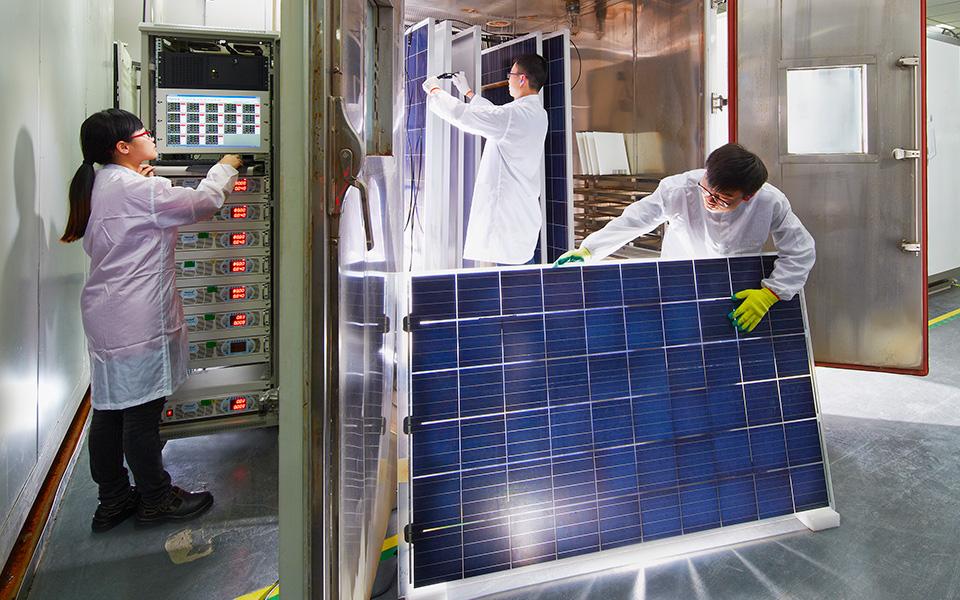☀️ The solar cells in normal solar panels are made up of crystalline silicon
☀️ The solar cells are stuck onto a clear pane and connected with metal wires
☀️ A backsheet and frame are sealed onto the clear pane to form an airtight unit
Solar panels are not easy to make, as they require several steps. This is why they are not cheap. In this article, I will explain how solar panels are manufactured and what different steps are involved in the manufacturing process. I will also cover how other kinds of solar panels are made, and where most of them are produced.
How are solar panels manufactured?
The process of making solar panels includes creating solar cells from crystalline silicon (a very pure form of silicon), putting them on a transparent pane, joining the cells with wires, covering them with a backsheet, and framing everything into an airtight solar panel unit.
Solar cells are the key part of the solar panel, since they’re the part that produces electricity.
The main two kinds of solar panel used are monocrystalline and polycrystalline solar panels.
We’ll explore how these two kinds of panels are made in more detail in the following sections.
1. The crystalline silicon is melted into cylinders
Monocrystalline solar cells are made by melting and shaping a single piece of crystalline silicon into a cylinder, also known as an ingot. During this process, the crystalline silicon is also mixed with gallium (Ga) or boron (B), which makes it have a positive electrical charge.
Polycrystalline solar cells are made in a similar way. The only difference is that multiple pieces of crystalline silicon are melted together, instead of one.
Crystalline silicon is a material that can turn sunlight into electricity. This is called photovoltaic (PV) effect. Other kinds of solar panels use different photovoltaic (PV) materials.
2. The silicon cylinder is cut into wafers to form solar cells
The silicon cylinder is then sliced into very thin wafers. One side of the wafers is coated with phosphorus (P) so that it has a negative electrical charge. The other side (the boron (B) or gallium (Ga) side) will keep its positive charge – this is to make the electrons move, and is similar to how a battery works.
As a final step in this process, the wafers are given an anti-reflective coating, so that they catch sunlight instead of reflecting it. At this point, the silicon wafers are now ready to become solar cells.
3. Metal electricity conductors are printed and wired into the solar cells
The front of the solar cells is printed with thin metal strips, usually silver (Ag). Then, the solar cells are joined together from the back by thin wires, usually copper (Cu).
These metal strips and wires are electricity conductors. This means that they collect and transfer the electricity that’s produced when the sunlight hits the solar cells to the inverter.
4. The solar cells are attached to a clear pane
The solar cells are then glued face down onto a clear pane of glass or plastic with a sticky material, such as polymer encapsulant or ethylene-vinyl acetate (EVA). The solar cells end up making a grid pattern on the pane.
The clear pane acts as a protective front layer, which keeps the solar cells from getting damaged by rain, dust, or debris.
5. The clear pane is attached to a backsheet
More sticky materials are put over the face-down solar cells, and a backsheet (the back cover of a solar panel) is put over that, basically wrapping the solar cells in protective layers.
All the layers are then heated and pressed together with a vacuum, so that they stick into an airtight unit. At this point, the solar panel is almost done.
6. A frame and a junction box are attached to the solar panel
Metal wires are added to the sides of the solar panel, along with a metal frame, usually made from aluminium. The frame makes the panel stronger and more durable against weather conditions.
The wires that go along the side of the solar panel are connected to a junction box, which is fixed to the back of the panel.
The junction box gathers the electricity made by the panel’s solar cells, and controls the amount of electricity being sent from the panels to the rest of the electrical system they’ll be linked to like the inverter.
With this last step, the solar panel is ready.
7. Testing happens throughout the manufacturing process
The solar panels and solar cells are checked for errors at every step of the manufacturing process. Engineers often look for breaks in the solar cells or panels, and shine light on them to make sure they work as expected.
How are other types of solar panel made?
Besides monocrystalline and polycrystalline solar panels, there are other kinds of solar panels. These include thin-film solar panels, organic solar panels, perovskite solar panels, quantum dot solar panels, and ‘zombie’ solar panels.
The process of wrapping solar cells between protective layers is the same, but what the solar cells are made of and how they’re made changes depending on the kind of solar panel.
I’ll explain how different kinds of solar panel cells are made in the next sections.
How are thin-film solar panels made?
Thin-film solar panels are made by putting the photovoltaic (PV) material in several thin layers on a flexible sheet of glass, plastic or metal, instead of cutting it into cells, as is done with monocrystalline or polycrystalline solar panels.
Different types of photovoltaic (PV) material are used to make thin-film solar panels. These include cadmium telluride (CdTe) – the most popular material for thin-film panels – copper indium gallium selenide (CIGS), and amorphous silicon (a-Si).
After the photovoltaic (PV) material has been put in the panel, a laser makes rectangular patterns in it to form individual solar cells.
How are organic solar panels made?
Solar cells made from ‘organic compounds’ are used to make organic solar panels. These are molecules made of carbon (C) atoms joined by other atoms, such as hydrogen (H), oxygen (O), and nitrogen (N).
The result is a very light and flexible solar cell, which can be put on a wide range of materials, from glass to flexible plastic. The downside is that organic solar cells are not as good as typical solar cells – only around 10% efficient on average – and they wear out much faster too.
Because of this, and the fact that the technology is still quite new, organic solar panels are not yet for sale.
How are perovskite solar panels made?
Perovskite solar panels use perovskite as the photovoltaic (PV) material. It’s a man-made material that copies the structure of a mineral with the same name.
It’s a fairly new form of technology, and so scientists are still finding the best way to make perovskite solar panels.
For now, there are two main ways to make perovskite solar cells.
The first way is to cover a normal silicon solar cell with a thin layer of perovskite. This is usually done using a “spin-coating method”; a few drops of a perovskite liquid are put onto a base (usually a solar cell) which is then spun until there’s a smooth layer of perovskite.
The second, more recent way, is similar to the way used for making thin-film solar panels. Basically, it means coating a sheet – made from plastic, glass, or silicon cells – with thin layers of perovskite.
How are quantum dot solar panels made?
Quantum dot solar panels use ‘quantum dots’, which are basically fake atoms, as the photovoltaic (PV) material.
The most common way to make quantum dots is called ‘colloidal synthesis’.
This process involves a lot of complicated chemistry, but the final result is that the quantum dots are spread into a liquid solution, and sprayed or dropped onto a material, such as a glass or plastic pane (the same kind used in other kinds of solar panels).
Quantum dot solar panels are not yet used, since they use a fairly new technology to make solar cells. But studies have shown that they can make solar panels that are potentially 66% efficient.
How are zombie solar panels made?
Zombie solar panels use ‘zombie’ solar cells, also called dye-sensitised solar cells. These cells are made from organic dyes that can catch light.
To make them, a mixture that can carry electricity, usually titanium dioxide (TiO2), is put into a thin square of glass or plastic with a material that can also carry electricity, usually idiom tin oxide (SnO2) or fluorine-doped tin oxide (SnO2/F). This is then soaked in the organic dye.
After that, the square is dipped in a liquid that can move electricity and covered with another layer of glass, this time with a different material, usually platinum (Pt), carbon (C), or graphite (C).
Zombie solar panels are not for sale yet, but what’s special about them is that they have the potential to make electricity indoors, even if it is in small amounts.
Where are most solar panels made?
China, in East Asia, is the main producer of solar panels – around 80% of them are made there, according to the International Energy Agency (IEA).
Also, six of the seven biggest solar panel makers are based in China, such as JA Solar, Aiko Solar and TrinaSolar, who make some of the best solar panels.
This doesn’t mean that other countries don’t make solar panels. The USA and Canada also have big solar panel making companies, such as First Solar and Canadian Solar respectively. The UK makes solar panels with the longest guarantee of 40-years and a high efficiency rating of 22.8% which is the Maxeon solar panel from UK company Maxeon Solar Technologies, Ltd.
Conclusion
Solar panels are not simple to make, and they are always changing and getting better each year.
Solar panels with solar cells made from silicon, such as monocrystalline and polycrystalline solar panels, might be the most common today, but maybe not in the future. New and better kinds of solar panels, such as perovskite and quantum dot solar panels could become the most common in just a few years time.
That’s all great news for you, the buyer, since the better solar panels are, the more electricity they’ll make. Plus, with the price of solar panels going down, that means you’ll pay off your purchase in less time than you would have even ten years ago.
Feeling motivated and ready to get a free no-obligation quote for a solar PV system? Want to learn more? Your best option is to talk to one of our friendly solar energy experts on 01268 928 690 or click on the ‘Enquire Now’ button below and we will help you find the right solar PV system for your home and budget.
Frequently Asked Questions about Solar Panels
The short answer is yes. Solar panels can cut 70% off your energy bills, and that proportion is growing as gas bills rise. No wonder installations have risen by 45% in the last three years, and shot up by 80% in the last year alone. But solar panels are an investment.
1-2 bedroom property, 6 solar panels generating about 1,600 kWh a year.
3 bedroom property, 10 solar panels generating about 2,650 kWh a year.
4-5 bedroom property, 14 solar panels generating about 3,700 kWh a year.
The answer depends on how much you pay for the solar panels, how much your electricity would otherwise cost, how much green energy the panels make from the sunshine you get, and whether you have a battery installed or not. The average payback period for solar PV is coming down and can be about 10 to 20 years depending on your system.
The industry standard for most solar panels’ lifespans is 25 to 30 years. Most reputable manufacturers offer production warranties for 25 years or more. The average break even point for solar panel energy savings occurs six to 10 years after installation.
Whilst there is no hard and fast rule as to how much value solar panels can add to the overall value of your property, suggestions range from 4% to 14% on average and they are certainly unlikely to detract from the value of your home, even if they aren’t the most attractive feature visually.
Latest Solar Panel Posts
- Why Leisure Centres Should Invest in Solar Panels
 In recent years, the concept of sustainability has become increasingly vital in various industries, including leisure centres. As the global focus shifts towards environmental conservation and renewable energy sources, leisure centres are recognizing the importance of investing in sustainable practices to reduce their operating costs and their carbon footprint. One such sustainable solution gaining traction… Read more: Why Leisure Centres Should Invest in Solar Panels
In recent years, the concept of sustainability has become increasingly vital in various industries, including leisure centres. As the global focus shifts towards environmental conservation and renewable energy sources, leisure centres are recognizing the importance of investing in sustainable practices to reduce their operating costs and their carbon footprint. One such sustainable solution gaining traction… Read more: Why Leisure Centres Should Invest in Solar Panels - School Funding – Solar for Schools
 Solar energy is revolutionizing the way educational institutions approach sustainability and energy consumption. As schools seek innovative solutions to reduce costs, educate students about renewable energy, and minimize their environmental impact, the adoption of solar power has emerged as a compelling choice. Solar For Schools, a leading initiative in the field, empowers educational institutions to… Read more: School Funding – Solar for Schools
Solar energy is revolutionizing the way educational institutions approach sustainability and energy consumption. As schools seek innovative solutions to reduce costs, educate students about renewable energy, and minimize their environmental impact, the adoption of solar power has emerged as a compelling choice. Solar For Schools, a leading initiative in the field, empowers educational institutions to… Read more: School Funding – Solar for Schools - Homes with solar panels can sell for more than those without
 Harnessing the power of the sun to generate clean, renewable energy is not only a sustainable choice for homeowners but also a lucrative investment in the UK property market. Homes equipped with solar panels are increasingly commanding higher prices and attracting more buyers than their non-solar counterparts. In this blog post, we’ll delve into the… Read more: Homes with solar panels can sell for more than those without
Harnessing the power of the sun to generate clean, renewable energy is not only a sustainable choice for homeowners but also a lucrative investment in the UK property market. Homes equipped with solar panels are increasingly commanding higher prices and attracting more buyers than their non-solar counterparts. In this blog post, we’ll delve into the… Read more: Homes with solar panels can sell for more than those without - Solar Panels and EPC Ratings
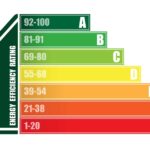 Solar panels have become increasingly popular as a sustainable energy solution, offering numerous benefits for both residential and commercial properties. In parallel, Energy Performance Certificate (EPC) ratings serve as indicators of a building’s energy efficiency. Understanding how solar panels can impact EPC ratings is crucial for maximizing energy savings and environmental benefits. This blog post… Read more: Solar Panels and EPC Ratings
Solar panels have become increasingly popular as a sustainable energy solution, offering numerous benefits for both residential and commercial properties. In parallel, Energy Performance Certificate (EPC) ratings serve as indicators of a building’s energy efficiency. Understanding how solar panels can impact EPC ratings is crucial for maximizing energy savings and environmental benefits. This blog post… Read more: Solar Panels and EPC Ratings - Is it worth buying solar panels in Basildon, Essex?
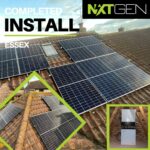 ☀️ Over 10,000 homes in Basildon have a solar panel system installed. ☀️ You’ll normally break even on solar panels in less than 10 years. ☀️ A 3.5kW solar panel system will cost about £7,000 on average. Solar panels are becoming more affordable and more common in the UK, with over 1.3 million households already… Read more: Is it worth buying solar panels in Basildon, Essex?
☀️ Over 10,000 homes in Basildon have a solar panel system installed. ☀️ You’ll normally break even on solar panels in less than 10 years. ☀️ A 3.5kW solar panel system will cost about £7,000 on average. Solar panels are becoming more affordable and more common in the UK, with over 1.3 million households already… Read more: Is it worth buying solar panels in Basildon, Essex? - Wiltshire’s Good Energy Partners with bigHead to Achieve 50% Solar Energy Goal
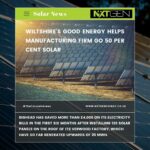 Wiltshire-based Good Energy has played a crucial role in helping Dorset manufacturing firm bigHead transition to utilizing solar power for 50% of its energy needs. Thanks to the collaboration between the two companies, bigHead has successfully installed 130 solar panels on the roof of its Verwood factory, resulting in significant cost savings of over £4,000… Read more: Wiltshire’s Good Energy Partners with bigHead to Achieve 50% Solar Energy Goal
Wiltshire-based Good Energy has played a crucial role in helping Dorset manufacturing firm bigHead transition to utilizing solar power for 50% of its energy needs. Thanks to the collaboration between the two companies, bigHead has successfully installed 130 solar panels on the roof of its Verwood factory, resulting in significant cost savings of over £4,000… Read more: Wiltshire’s Good Energy Partners with bigHead to Achieve 50% Solar Energy Goal - Unveiling the Perfect Fit: How Many Solar Panels Can Your Roof Handle?
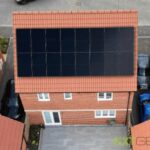 Harnessing the power of the sun is an attractive proposition for many UK homeowners. But before diving headfirst into solar energy, a crucial question arises: how many solar panels can fit on your roof? The answer, unfortunately, isn’t a simple one. It’s a captivating interplay between several factors, each one requiring careful consideration. Understanding Your… Read more: Unveiling the Perfect Fit: How Many Solar Panels Can Your Roof Handle?
Harnessing the power of the sun is an attractive proposition for many UK homeowners. But before diving headfirst into solar energy, a crucial question arises: how many solar panels can fit on your roof? The answer, unfortunately, isn’t a simple one. It’s a captivating interplay between several factors, each one requiring careful consideration. Understanding Your… Read more: Unveiling the Perfect Fit: How Many Solar Panels Can Your Roof Handle? - Powering Care with Sunshine: How Solar Panels Benefit Nursing Homes
 Nursing homes are the backbone of our communities, providing essential care for our elderly population. But keeping these facilities running smoothly requires a significant amount of energy – lighting, heating, cooling and medical equipment all contribute to a hefty energy bill. This is where commercial solar panels come in, offering a win-win solution for both… Read more: Powering Care with Sunshine: How Solar Panels Benefit Nursing Homes
Nursing homes are the backbone of our communities, providing essential care for our elderly population. But keeping these facilities running smoothly requires a significant amount of energy – lighting, heating, cooling and medical equipment all contribute to a hefty energy bill. This is where commercial solar panels come in, offering a win-win solution for both… Read more: Powering Care with Sunshine: How Solar Panels Benefit Nursing Homes - Who are NXTGEN Energy Ltd?
 NXTGEN Energy Ltd are a solar energy company based in Rayleigh, Essex, UK. They specialize in the installation of solar panels, battery storage systems, and electric vehicle chargers for homes and businesses across the UK. They are MCS certified, which means they meet the Microgeneration Certification Scheme’s standards for quality and safety. This makes them… Read more: Who are NXTGEN Energy Ltd?
NXTGEN Energy Ltd are a solar energy company based in Rayleigh, Essex, UK. They specialize in the installation of solar panels, battery storage systems, and electric vehicle chargers for homes and businesses across the UK. They are MCS certified, which means they meet the Microgeneration Certification Scheme’s standards for quality and safety. This makes them… Read more: Who are NXTGEN Energy Ltd? - Why UK Homeowners with Solar Panels Need Bird Proofing (Beyond the Basics)
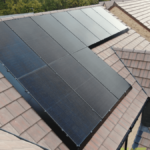 Imagine waking up to the quiet hum of your solar panels, generating clean energy to power your home. It’s a beautiful image, symbolizing lower electricity bills and sustainability. But what if a gang of birds decided the solar panels on your roof were the perfect spot for their new condo complex? Unfortunately, this idyllic scene… Read more: Why UK Homeowners with Solar Panels Need Bird Proofing (Beyond the Basics)
Imagine waking up to the quiet hum of your solar panels, generating clean energy to power your home. It’s a beautiful image, symbolizing lower electricity bills and sustainability. But what if a gang of birds decided the solar panels on your roof were the perfect spot for their new condo complex? Unfortunately, this idyllic scene… Read more: Why UK Homeowners with Solar Panels Need Bird Proofing (Beyond the Basics) - Solar Panel Financing
 At NXTGEN, we are committed to delivering excellent service and we understand that many customers may prefer the option of paying for their solar panels with finance. So, we’ve partnered with established credit brokers, Ideal4Finance, to enable customers to spread the cost of purchase with manageable monthly payments. We can offer 3 Flexible Finance Options… Read more: Solar Panel Financing
At NXTGEN, we are committed to delivering excellent service and we understand that many customers may prefer the option of paying for their solar panels with finance. So, we’ve partnered with established credit brokers, Ideal4Finance, to enable customers to spread the cost of purchase with manageable monthly payments. We can offer 3 Flexible Finance Options… Read more: Solar Panel Financing - How AI could supercharge your solar panels
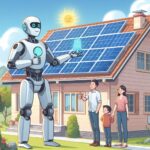 Imagine stepping outside on a crisp January morning, a mug of steaming tea warming your hands. You glance at your rooftop, not with dread at energy bills, but with a mischievous grin. Why? Because the sun, that cheeky orb in the sky, is being squeezed for every juicy watt it holds thanks to your AI-powered… Read more: How AI could supercharge your solar panels
Imagine stepping outside on a crisp January morning, a mug of steaming tea warming your hands. You glance at your rooftop, not with dread at energy bills, but with a mischievous grin. Why? Because the sun, that cheeky orb in the sky, is being squeezed for every juicy watt it holds thanks to your AI-powered… Read more: How AI could supercharge your solar panels

